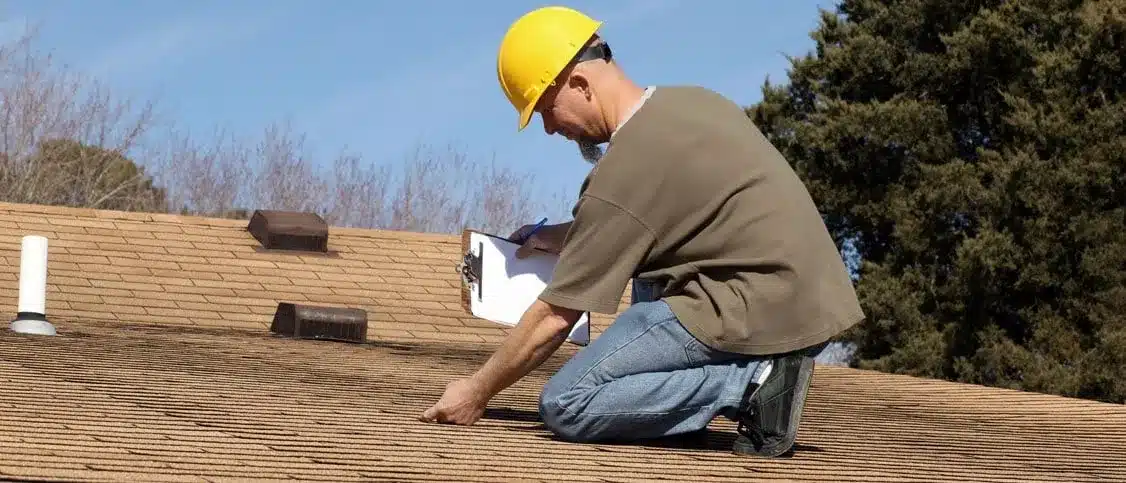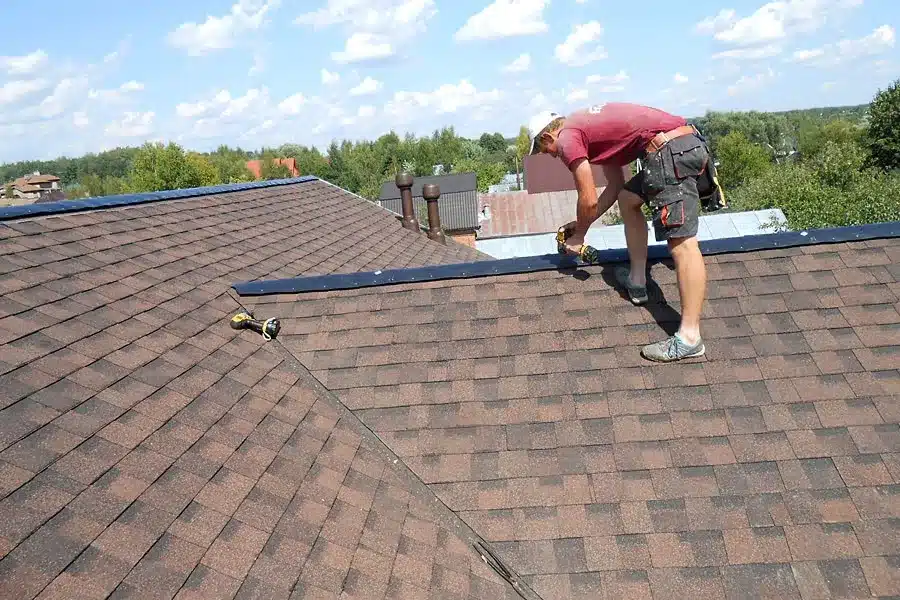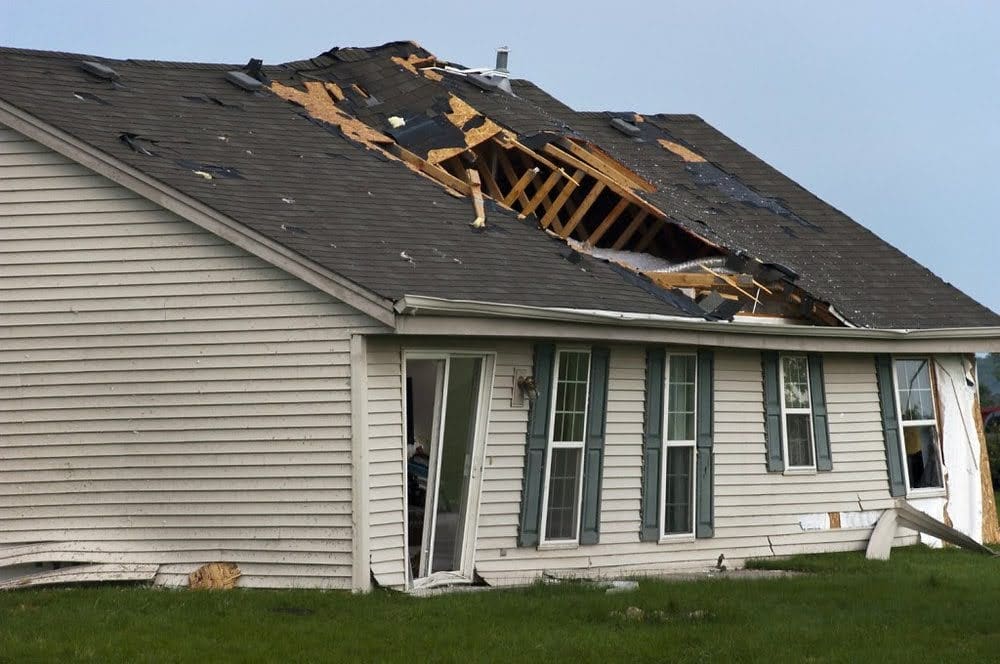Living in Hill Country means being prepared for all sorts of weather conditions, especially during the spring and summer, when the risk of hail, winds, and damage to your home increases. The aftermath of a hailstorm or windstorm storm can be devastating, and it’s critical to act quickly to prevent further damage. Roofing damage, in particular, can be a costly and dangerous problem if not addressed promptly.
In this article, we’ll explore essential storm damage repair tips for homeowners, focusing on roofing repairs. From identifying damage to taking immediate action, you’ll be armed with the knowledge to keep your home protected. Whether you need a roof leak repair or a full roof replacement, this guide will help you understand what to do and when to call a roofing repair contractor.
Increased Storm Risk
As storm season approaches, residents of Hill Country face an increased risk of severe weather events, including heavy rains, thunderstorms, hailstorms and even the aftermath of hurricanes. These storms can wreak havoc on roofs, causing leaks, missing shingles, granule loss and even structural damage. The strong winds can also bring down trees, damaging your roof and siding. It’s essential to recognize the potential hazards and take steps to protect your home. Key Risks of Storms in Hill Country:
- Wind Damage: Strong winds can dislodge shingles, tiles, and other roofing materials, leaving your home vulnerable to water leaks.
- Fallen Trees: High winds and saturated soil may cause trees to fall, leading to significant damage to the roof, siding, and gutters.
- Hail Damage: Hailstorms can cause significant damage to roofing materials, siding, and windows. Hailstones can vary in size from small pellets to softball-sized impacts, leaving dents, cracks, and punctures in roofing materials. These impacts can compromise the structural integrity of the roof and lead to leaks.
- Flooding: Heavy rains can cause localized flooding, which may lead to water intrusion through compromised roofs or windows.
By understanding these risks, you can take the necessary precautions to mitigate damage before a storm hits.
Preparation Tips
Preparation is key to minimizing storm damage. Before a storm arrives, take steps to safeguard your roof and home. A little foresight can save you a lot of time and money on repairs.
- Inspect Your Roof Before the Storm: Regular roof inspections can catch small issues before they turn into bigger problems. Ensure that any loose shingles, debris, or other signs of wear are addressed promptly.
- Trim Back Trees: Trim overhanging branches that could potentially fall onto your roof during strong winds.
- Clean Gutters: Clogged gutters can exacerbate flooding during heavy rain. Ensure that gutters and downspouts are clear of debris so rainwater can flow freely off the roof.
- Check Roof Flashing and Sealants: Inspect the flashing around chimneys, vents, and skylights to ensure it is sealed properly. Storms can exploit even the smallest gaps in flashing.
By completing these preventive measures before a storm, you can reduce the likelihood of roof damage and enhance your home’s resilience.
Central Texas Siding Services
We service all of central Texas, including but not limited to: San Antonio and surround areas, San Marcos, New Braunfels, Kyle, Buda, Austin, Round Rock, and Pflugerville. Please reach out for all your siding installations, siding replacement, and siding repair needs!
Inspection Steps
When the storm has passed and it’s safe to do so, it’s important to inspect your home for any signs of damage. An early inspection can help you detect issues before they become severe and more costly to repair.

Interior Inspection
The first place to look for damage is inside your home. Check your attic and ceilings for any signs of water damage.
- Wet Spots: Look for wet spots on your ceiling or walls. These are indicators that water has made its way through the roof.
- Sagging Areas: Pay attention to any sagging areas in your ceilings, as this could mean the roof structure is compromised.
- Water Stains: Discolored patches or water stains on the ceiling can indicate an active leak.
If you notice any of these issues, it’s time to contact a roofing repair company to investigate further.
Exterior Inspection
After ensuring it’s safe, inspect the exterior of your home. Look for visible signs of roof damage, such as missing shingles, cracks, or dents in your siding, and any debris that may have accumulated in gutters or around your home.
- Fallen Trees: Check the ground around your home for fallen branches or trees. They could have caused significant damage to your roof or siding.
- Roof Damage: Examine your roof for missing shingles, broken shingles, granule loss or punctured areas.
- Gutters and Siding: Make sure your gutters are intact and properly attached to the roof. Look for any visible damage to your siding or windows that could have been caused by wind or hail.
Ground-Level Search
You don’t need to climb onto the roof to check for certain types of damage. Conduct a thorough ground-level inspection by looking for the following:
- Missing or Damaged Shingles: Check your lawn and driveway for shingles that may have been blown off the roof.
- Debris: Look for debris such as broken tree branches, leaves, or damaged roofing materials. These can indicate that your roof has sustained damage.
- Hail: Though hard to see impacted shingles from the ground, if cars or gutters are hail dented, there’s a good chance your roof has been compromised.
If you notice missing shingles or debris, it’s important to call a professional roofing repair contractor for an inspection.
Remember: It’s not safe to climb on a potentially damaged roof. If you are unsure, contact an expert who will have the tools and experience to perform the necessary inspections and repairs.
Taking Action

If you suspect your roof has been damaged, don’t wait to take action. The longer you delay, the worse the damage could become, leading to higher repair costs. Steps to Take:
- Contact a Roofing Repair Company: Reach out to a trusted roofing repair services provider who can inspect the damage and provide an accurate assessment. If there’s enough damage for an insurance claim, see the steps below.
- Get a Professional Estimate: If there is enough for a claim, wait for the documents in hand before receiving quotes. If you simply need repairs, have a roofing repair contractor provide a detailed estimate, including roof leak repair and any structural fixes.
- Schedule Repairs Quickly: If the damage is significant, schedule repairs immediately to prevent further harm to your home.
Genuine Texas Exteriors specializes in expert roof inspections and installations, ensuring your home is protected from the elements.
Insurance Claims
In the aftermath of a storm, you may need to file an insurance claim to cover the cost of repairs. It’s important to understand your homeowner’s insurance policy and follow the correct steps to ensure a smooth claims process.
- Review Your Insurance Policy: Understand what types of storm damage are covered, including roof leaks, hail damage, flooding, and fallen trees.
- Document the Damage: Take photos of the damage to your roof and home. This will serve as evidence for your insurance claim.
- File the Claim: Contact your insurance company to file a claim. Once the adjustment date and time is set, it’s best to have a reputable roofer present at the time of the adjustment to ensure all damage is being properly documented.
- Work with a Roofing Repair Company: After you have your claim documents in hand, gather quotes from multiple companies to compare materials, warranties, installation processes, and upgrades. DO NOT sign any paperwork with a company before you have your claim documents.
Preventive Measures
To minimize the risk of storm damage in the future, consider upgrading your roof and taking other preventive measures:
- Upgrade Roofing Materials: If your roof is old or made from vulnerable materials, consider upgrading to stronger, storm-resistant options.
- Trim Back Trees: Regularly trim trees around your home to reduce the risk of falling branches.
- Clean Gutters Regularly: Ensure your gutters are free of debris to prevent water backup and flooding during heavy rains.
- Address Roof Issues Early: Don’t wait until the next storm to fix small issues. Addressing minor problems early can help you avoid costly repairs later.
Client Testimonials
Built on Trust, Proven by Texans
Conclusion
By following these storm damage repair tips, you can ensure that your home remains protected throughout the storm season. Whether it’s addressing roof leak repair or upgrading roofing materials, taking action now can save you time, money, and stress in the long run. Contact a trusted roofing repair contractor to assist with inspections and repairs, and be prepared for whatever the storm season may bring!
Frequently Asked Questions (FAQs)
How do I know if my roof has been damaged after a storm?
Check for wet spots or stains in your attic and on your ceilings, sagging areas, or cracks in your roof or walls. If you notice missing shingles or visible damage from the ground, call a roofing repair contractor for a professional inspection.
Can I repair my roof myself after a storm?
Roof repairs can be dangerous, especially after a storm. It’s safer to hire a professional roofing repair company to inspect and fix any damage.
How long will it take to repair my roof after a storm?
The time it takes to repair your roof depends on the extent of the damage. Minor repairs may take a few hours, while a roof replacement will require a whole day.
Will my homeowner’s insurance cover storm damage?
Not all policies are made equal. Though your homeowners insurance should cover damages related to hailstorms, windstorms, and fallen trees, it’s important to review your policy before submitting a claim. An experienced roofer that specializes in working with insurance can help you walk through your policy before submitting a claim.
How can I prevent roof damage during a storm?
Prepare your home by trimming trees, cleaning gutters, and inspecting your roof before storm season. Regular maintenance can help prevent significant damage during a storm.


